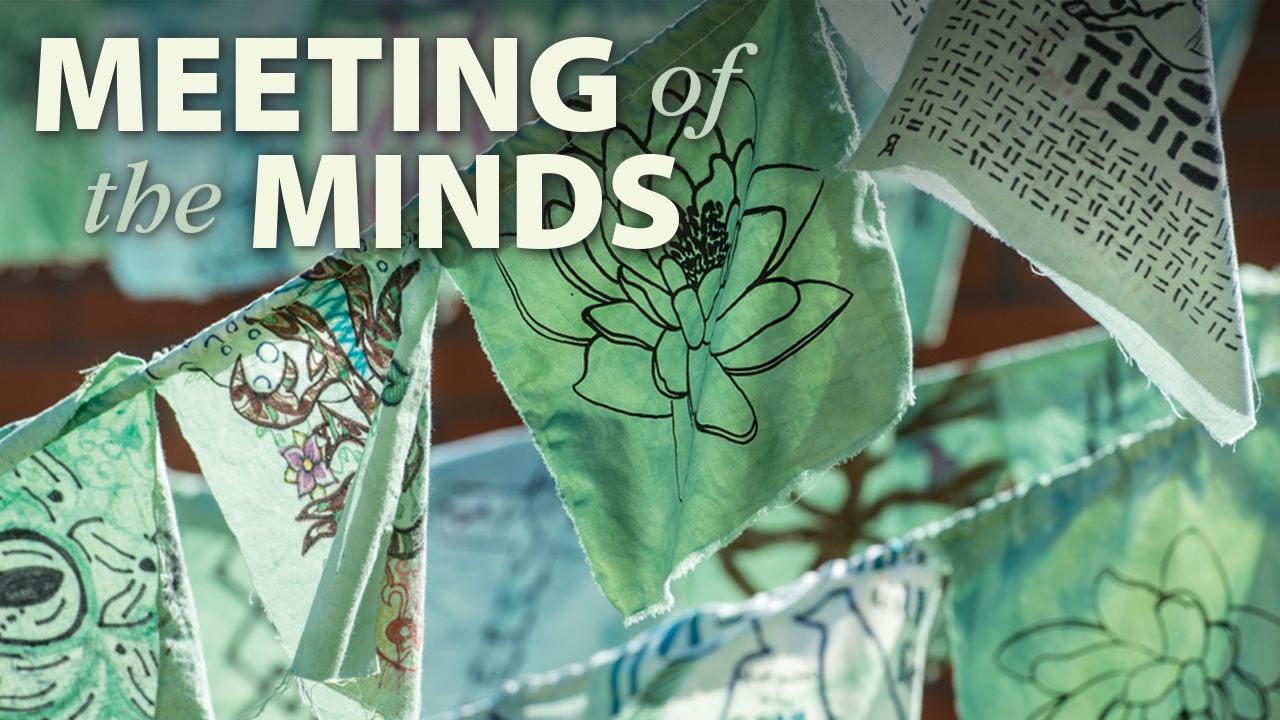His Holiness the 14th Dalai Lama, Tenzin Gyatso, is no stranger to science. At the beginning of a UAB Scientific Symposium that kicked off his three-day visit to Birmingham in October 2014, the Tibetan Buddhist leader and Nobel Peace Prize recipient described how, as a child, he would take apart his toys to see how they worked. That sparked a lifelong fascination with inquiry and investigation. “Science and spirituality have come closer,” he said. By expanding our knowledge of matter and mind, we can then translate it for practical use, he added.
 The Dalai Lama noted that neuroplasticity therapies "bring joy" by helping patients take charge of their own care.
The Dalai Lama noted that neuroplasticity therapies "bring joy" by helping patients take charge of their own care.
The Dalai Lama came to UAB to learn about neuroplasticity, or the brain’s ability to change, grow, and repair itself. UAB’s Edward Taub, Ph.D., a behavioral neuroscientist and University Professor of psychology in the College of Arts and Sciences, shared his breakthrough successes with constraint-induced movement therapy (CI therapy), which he developed to help patients regain limb function following stroke and other neurological diseases and injuries. Other participants included renowned brain plasticity scientist Michael Merzenich, Ph.D., and Norman Doidge, M.D., a psychiatrist, psychoanalyst, and author of a best-selling book on neuroplasticity, who called UAB “the premier place in the world to get treatment for movement problems following stroke. It’s a national treasure.” Following the symposium, the Dalai Lama toured Taub’s UAB lab and met with CI therapy patients. Read more about Taub’s CI therapy and other UAB research into the mind’s healing power.
 The Scientific Symposium at UAB's Alys Stephens Performing Arts Center
The Scientific Symposium at UAB's Alys Stephens Performing Arts Center
Responding to an audience question about combating cynicism, the Dalai Lama noted that people have many reasons—scientific advances among them—to be hopeful and optimistic. “You have two eyes, but you must also use a third eye,” he said, encouraging Alabamians to widen their perspective and take note of the many people who “survive with human love and affection.”
 The Dalai Lama presents Edward Taub with a khata, a traditional white silk scarf.
The Dalai Lama presents Edward Taub with a khata, a traditional white silk scarf.
Watch the full symposium:
• Learn more about the Taub Therapy Clinic and how it helps patients.
• Give something and change everything for UAB researchers pursuing neuroplasticity breakthroughs.


